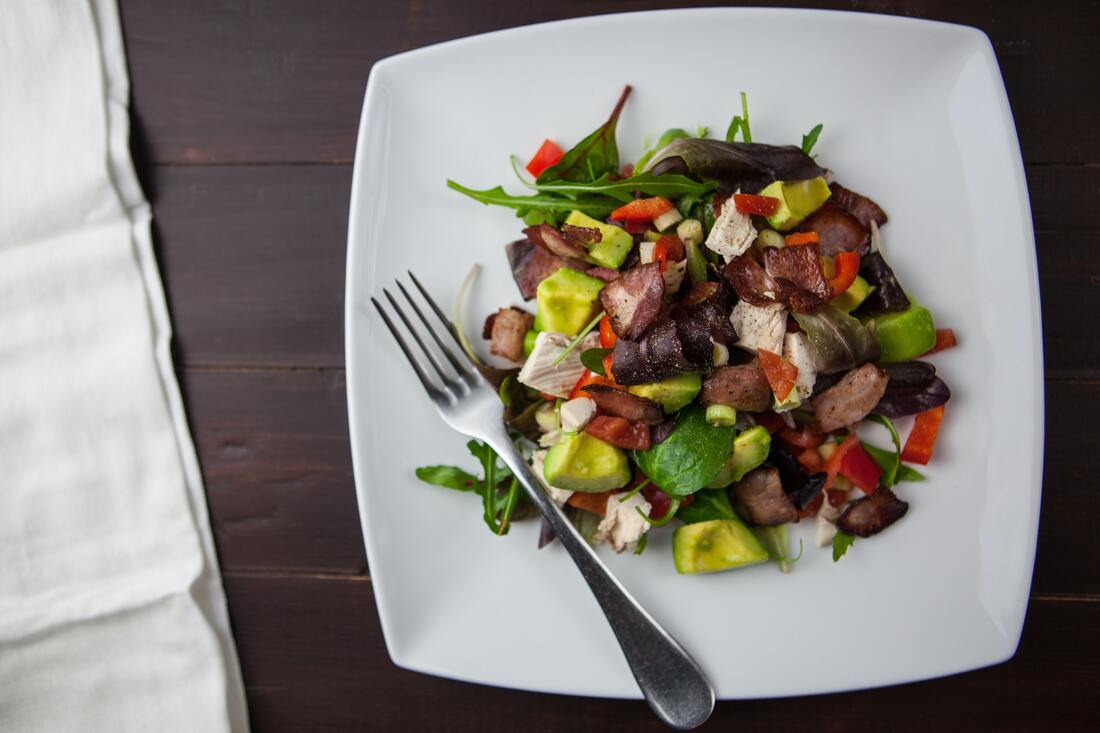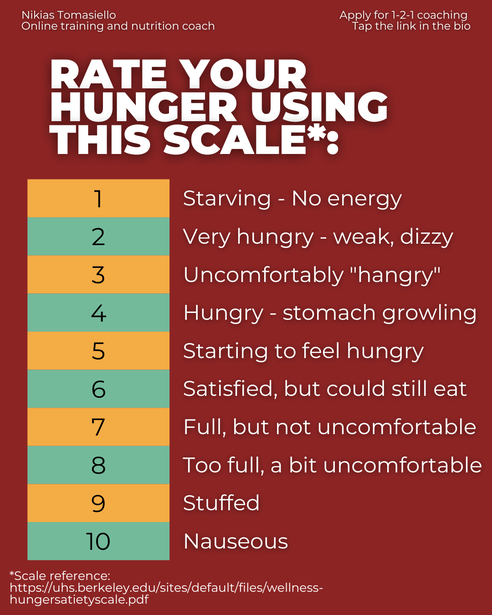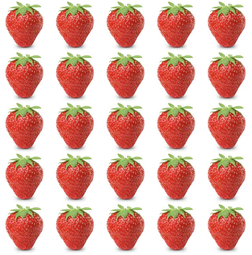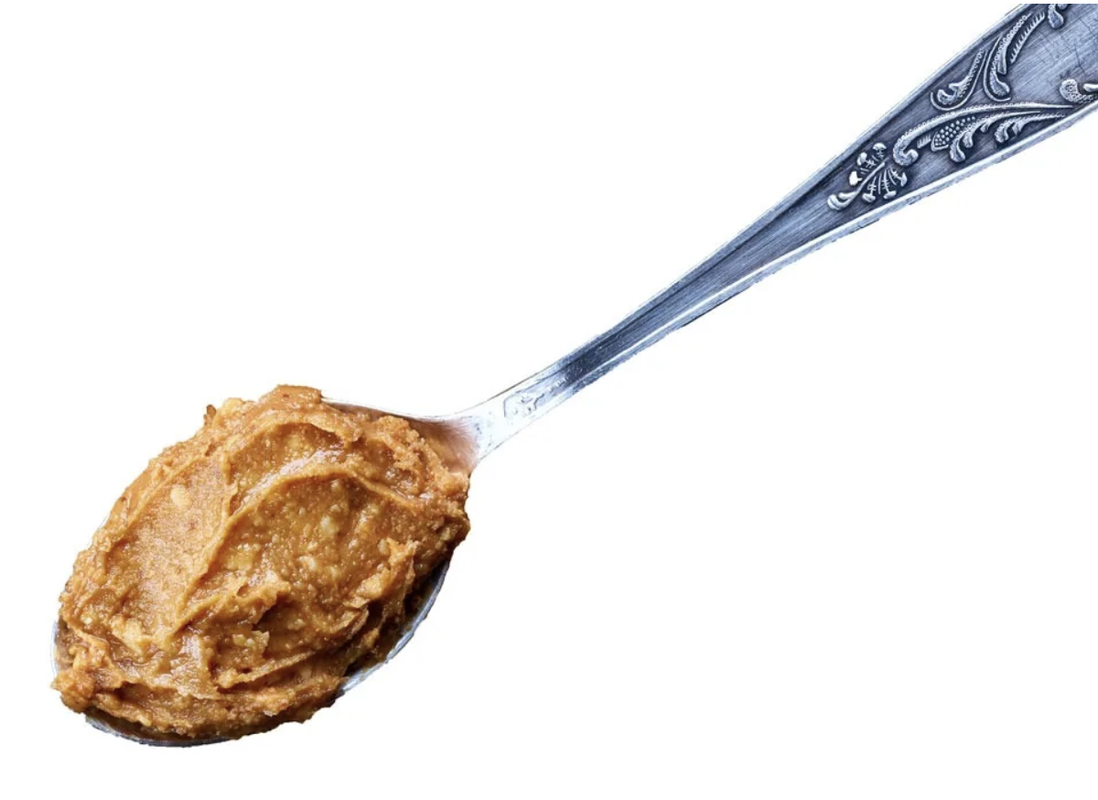Here’s the secret to weight loss: It's all about crowding out, not cutting out. Struggling to lose weight because you’re always hungry? Well, you’re not alone. Managing hunger during a fat loss diet is a fine art, one I’ve been helping clients with for years. In fact, back in 2020, my article called 11 Tips to Feel Full on a Fat Loss Diet became a huge hit among readers and clients alike. In addition, as part of my online coaching service, I have a private client Facebook group, where I host monthly live presentations on a topic of the clients’ choice. This month, the majority voted for a presentation on hunger management during fat loss. The evergreen interest in this topic thus inspired me to revamp my old article with all the extra knowledge I’ve gained in the last two years. That’s how this guide was born. In my experience, the struggle with hunger comes down to three main problems:
This article is going to empower you with the knowledge to overcome these challenges and become a master of hunger management. Ready to conquer your hunger? Hunger defined First of all, what even is hunger? It turns out that it’s pretty complicated. For one, hunger is multi-faceted, having both a psychological and a physiological component. Reading one of my favourite scientific papers on the topic, The Psychobiology of Hunger – A Scientific Perspective by Beaulieu and Blundell, I identified three key characteristics of hunger:
Now that you know what hunger is, let’s apply this definition to mastering it. Tip #1: Embrace it. If I can say so myself, this guide is pretty solid, but, even if you were to follow all of these tips to the letter, you wouldn’t completely get rid of hunger. Hunger is simply a standard response to losing body fat. The body’s comfort zone is called homeostasis, a state of balance in which – in the context of energy intake and fat storage – you neither gain nor lose weight. When you start losing weight, you throw off that balance. As a result, your body sends you a distress signal in the form of hunger. With a reasonable fat loss protocol in place, you can keep hunger to a minimum for a pretty long time. At some point, however, it will creep up on you. It will be a bit uncomfortable. And that’s ok. Don’t dread it. Accept it as part of the challenge. Personally, I like to think of hunger during a fat loss phase as a sign that my body is indeed losing fat. While it isn’t always true that you’re losing fat just because you’re hungry – for instance, we can get hungry even when eating enough to maintain our bodyweight – this thought gives me a little psychological boost. It may be placebo, but it works. Tip #2: Sit with it. During her first fat loss phase with me, a client of mine – let’s call her Paula – was struggling to hit the caloric target I set her, despite the fact that we’d built up her confidence and experience tracking and hitting calories before the beginning of the diet. When I asked her about it, she explained, “I get hungry at the end of the day, so I go over my target because I need to eat.” My response was, “Do you really?” Discussing the issue in more depth, we realised that she, in fact, did not. She’d simply never experienced that level of hunger before, so she associated it with an emergency. This is very common. In Western societies, we live in what’s called an “obesogenic environment” – AKA an environment that promotes obesity – where we have quick and easy access to low-cost, high-calorie food all day. Because of this, most of us aren’t used to even a moderate degree of hunger, since we can get a snack from a corner store or order from Just Eat as soon as we feel the slightest bit peckish. So it’s normal to find hunger unsettling. That’s what was happening to Paula, and she was going over her daily calorie target on an impulse in order to eliminate that discomfort. Which worked… but didn’t lead to fat loss, which was her goal, because she kept eating at maintenance calories. So I made two suggestions that changed the game. I sent her this scale and told her to ask herself the following question the next time she got hungry at night: “How hungry am I from 0 to 10 right now?” In general, unless your hunger level is a 1 or a 2 – where you’re swaying on your feet, you have brain fog, and your legs weigh you down like blocks of lead – you probably don’t need to eat right away. As she became more mindful of her hunger levels, Paula stopped making rushed decisions that were unnecessary for her wellbeing and counterproductive for her goals. My second suggestion was to take 10 seconds before eating or drinking anything that she hadn’t already planned to eat. First, she’d log it on MyFitnessPal and find out how much it’d impact her caloric intake for the day, then she could choose whether to eat it instead of acting impulsively. During a fat loss phase, it’s sometimes necessary to override your hunger signals and choose to sit with the discomfort in order to continue making progress. Again, it’s part of the challenge. It won’t kill you, but it will make you leaner. Tip #3: Choose the best strategy for you to deal with cravings. One of the three characteristics of hunger I mentioned at the beginning is that you don’t always eat because you’re hungry, and you also don’t always need to eat when you’re hungry. Mammals – including humans – must eat to stay alive, so eating needs to be a high priority in our mind. For this reason, the brain has developed complex and diversified systems that drive us to eat. Depending on which of these mechanisms takes priority in the brain to prompt a hunger response, hunger can be classified into two types:
Most of us know hedonic hunger as “cravings”. For example, you don’t need to eat a bag of cookies to stay alive, but you may feel the urge to do so just as strongly as you’d experience homeostatic hunger. To be clear, eating for hedonic reasons isn’t always “bad”. However, most of the foods we tend to crave aren’t exactly easy to fit into a fat loss diet because they’re high in calories, fats, and carbs. At the same time, when some people force themselves to be too strict about cravings for too long, they end up raiding the pantry after a couple of weeks of excessive restriction. In general, I recommend clients like this to set aside 10 to 15% of their total daily calories (150 to 225 if your target is 1500 per day) to satisfy hedonic hunger. For them, having this small daily treat can make the difference between a sustainable diet and an unsustainable one; between consistency and “starting over Monday” every week. On the other hand, some of us can’t just have a single chocolate square without eating an entire bar or three. These people tend to get the most out of their fat loss phases when keeping all “tempting” food out of the house. For this type of client, planning maintenance phases or diet breaks – when calories are increased from a deficit to maintenance for a relatively short period of time between dieting phases – becomes a pivotal tool for them to still get the opportunity to satisfy hedonic hunger without compromising fat loss progress. Tip #4: Stay busy. Three weeks into a fat loss phase, a client, whom we’ll call Arnold, sent me a very concerned check-in: “I was superhungry all week. I think I need to eat more calories.” However, he’d only been dieting for two weeks, his calories weren’t that low, and he wasn’t losing weight so fast that I’d deem the pace unsustainable. Digging deeper, I found out that Arnold hadn’t been at work that week, so he hadn’t been as busy or as active with his daily steps. No wonder his hunger was skyrocketing: he had plenty of extra time to think about food! That’s one of the reasons why most people can easily stick to their diet Monday to Friday, then struggle with it over the weekend or on holiday. When you don’t have work keeping you occupied, fill your empty schedule with other mindful activities, such as:
It can be anything you like as long as it keeps your mind engaged. Passive activities like watching TV don’t work as well and, if anything, they may make you even hungrier. No Netflix and chill for you, I’m afraid… Tip #5: Plan around your hunger patterns. Hunger levels tend to vary between people and throughout the day. For instance, some like to fast until noon, whereas I get hungrier in the morning than in the evening, and will feel like death warmed over if I were to fast earlier in the day. Discussing my clients’ nutritional habits, I’ve learnt that a lot of them eat at certain times simply because that’s what they’ve always done, even when they aren’t all too hungry for the meal. However, when your calorie budget is smaller than usual, you need to be smarter about it. For example, if you don’t feel any hunger whatsoever until 11 am, why would you waste calories on a full breakfast? To make sure you spread your protein across three to six daily servings eaten every three to five hours, you could have a protein shake made with protein powder and water to keep the calories in check. Then you’d eat the bulk of your daily calories later, when you actually need them. In addition to meal timing, experiment with your total daily meals, including snacks. For instance, my client Sebastian (yes, I’m having fun with made-up names) loves having more frequent, smaller meals throughout the day, whereas I prefer three or four larger meals. Since the number of daily meals and snacks doesn’t seem to matter for fat loss, pick the best meal frequency for hunger management and protein distribution. Lastly, regardless of frequency, meal regularity can help curb your hunger. When you have a similar eating pattern every day, your body adapts by making you hungry around that time because it learns to expect to be fed. For this reason, keeping to a regular schedule can prevent you from experiencing unwanted hunger at random times throughout the day. Tip #6: Get an adequate amount of good quality sleep. Sleeping is obviously essential for survival, but it becomes particularly important when you’re in a caloric deficit. A lack of sleep can make you feel “hangry”, demotivated to move, and more sensitive to cravings for sugars and fats. It can also impair your ability to focus and make decisions. We make more than two hundred food-related decisions every day. What are the chances that you’re going to make even ten diet-appropriate decisions if you’re a running low on mental energy? Don’t underestimate the impact of a good night’s sleep on your fat loss attempts. To read more about the effects of sleep on muscle gain and fat loss, click here. Tip #7: Keep it samey. The less you think about food, the smoother your diet will be. So don’t waste hours every week trying to come up with a new menu. First of all, keep the same meal structure. If you normally have three meals and snack, stick to it. Choose one to two food options for these four meals, then rotate them week to week. To cover your nutritional bases, change your sources of carbs, protein, fats, vegetables, and fruit included with each option. For example, I’ve been dieting for a photoshoot for the past six months. In the last month, when my calories have been the lowest throughout the entire prep, I’ve been having the same three meals and one snack for all four weeks, but my carbs, fats, and protein sources are different in each one, and I buy different fruit and vegetables every week. Tip #8: Slow down. Research shows that chewing your food more and eating slowly can both decrease hunger. Try the following strategies to slow down:
Tip #9: Harness energy density and food volume. The term “energy density” refers to the calories contained within a certain weight of food. You can work this out by dividing the number of calories in a food item by the serving weight. When you compare two isocaloric (same caloric content) portions of different foods, the portion with the lower energy density is going to look bigger. As a practical example, this is what 100 calories of peanut butter and strawberries can look like: Which one will fill you up more: a small army of strawberries or a tablespoon of peanut butter? It’s kind of a no-brainer.
By choosing the strawberries over the peanut butter, you’re applying a hunger management strategy called “volume eating”, which involves including a high proportion of low energy density foods in your meals, so that you can have larger portions without breaking the calorie bank. This is more satisfying psychologically, because who doesn’t like to feel like they’re eating a huge meal on a diet? It’s also more filling from a physiological perspective. As food fills up your stomach, it activates tension and stretch receptors, whose job is to send fullness signals to the brain, so that you stop eating before your stomach becomes too full and stretched. Low energy density foods tend to have at least one of the following characteristics:
When using energy density and volume eating to their advantage, my clients often check in saying they can’t believe they’re eating so much food. Sometimes they’re even struggling to eat enough calories because they’re so satiated! Not a bad problem to have when you’re on a diet and losing body fat, if you ask me. Tip #10: Eat lean protein and fibre with every meal and snack. Not only are fibre and lean protein sources lower in energy density. Fibre and protein have also been shown in research to be two of the most satiating nutrients in general. In no particular order, this is a handy list of lean protein and fibre foods you can add to every meal and snack: Lean protein
Fibre
Tip #11: Try the Satiety Index List. This is a list of 38 different foods that the subjects involved in a 1995 study rated from the most satiating to the least satiating. The results showed the following:
Not all of these might be as filling for you as they were for the study participants, but they’re worth a try. You can never have too much hunger management ammunition during a diet. Tip #12: Create lower-calorie, higher-volume versions of meals you’re already having. Overhauling your current menu when you start a fat loss phase adds an unnecessary layer of stress. That’s why I don’t give my clients generic meal plans that may or may not include foods they like or can cook: this method doesn’t work long term. Instead, think of ways to make your current meals more “fat loss friendly”. These are some easy replacements to try:
If these swaps sound easy, it’s because they’re meant to be. When fat loss becomes too hard to achieve, it’s just not going to happen. It’s going to be just another diet you eventually fall off of instead of a true lifestyle transformation. Tip #13: Limit liquid calories. Drinking your calories takes five seconds and provides very little in the way of fullness. In fact, several studies have shown an association between calorific beverages and a higher caloric intake, likely due to the fact that solid food seems to be more satiating (click, click, click). Alcohol, in particular, is usually the main reason why your weekend night out can get out of hand. For one, alcohol contains 7 calories per gram: for example, a pint of beer typically contains over 200 calories and a small shot of vodka around 100. In addition, alcohol doesn’t fill your stomach, but it lowers your inhibitions, a potential recipe for disaster if you’re anywhere near food when you’re drunk. If you love your soda or your glass of wine on a Friday night, both can have a place in your diet, but you’d be better off cutting down on your frequency and the size of your portions considerably if you’re struggling with hunger and consistency. Practical Takeaways
Thanks for reading. May you make the best gains. To receive helpful fitness information like this on a regular basis, you can sign up for my newsletter by clicking here. To learn how to develop an effective mindset for long-term fat loss success, you can sign up for my free email course, No Quit Kit, by clicking here.
0 Comments
Your comment will be posted after it is approved.
Leave a Reply. |
Nikias TomasielloWelcome to my blog. I’m an online fitness coach with a passion for bodybuilding, fantasy, and bread. Want to work with me? Check out my services!Archives
May 2024
Tags
All
|
Follow me on social media |
Get in touch |
© 2018-2023 Veronica Tomasiello, known as Nikias Tomasiello – All rights reserved






 RSS Feed
RSS Feed